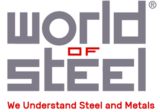Tinplate and Uses
Main types of internal can lacquer
|
General type of resin and components blended to produce it |
Flexibility |
Sulphide- stain resistance |
Typical uses |
Comments |
|
Oleo-resinous |
Poor |
Poor |
Acid fruits |
General purpose, relatively low cost |
|
Sulphur-resistant oleo-resinous (added zinc oxide) |
Good |
Good |
Vegetables, soups, (can end, topcoat over epoxy-phenolic) |
Not for use with acid products: |
|
Phenolic (phenol or substituted phenol with formaldehyde) |
Very good |
Very good |
Meat, fish, vegetables, soups |
Good at relatively low cost but film thickness restricted by flexibility |
|
Epoxy-phenolic (epoxy resins with phenolic resins) |
Poor |
Poor |
Meat, fish, vegetables, soups, beer and beverages (first coat) |
W ide range of properties may be obtained by modifications |
|
Epoxy-phenolic with zinc oxide (zinc oxide added) |
Good |
Good |
Vegetables, soups (especially can ends) |
Not used with acid products: |
|
Aluminized epoxy-phenolic (metallic aluminium powder added) |
Good |
Very good |
Meat products |
Clean but rather dull appearance |
|
Epoxy anhydride |
Good |
Good |
Vegetables |
Normally pigmented with titanium dioxide |
|
Epoxy acrylate |
Good |
Poor |
Vegetables (roller coated for can bodies and ends) beer & beverage (spray application) |
Supplied as water based systems |
|
Vinyl, solution (vinyl acetate co- polymers) |
Excellent |
Not applicable |
Spray on can bodies, roller coating on ends, as topcoat for beer and beverages |
Free from flavour taints; sensitive to soldering heat and not usually suitable for direct application to tinplate |
|
Vinyl, organosol or plastisol, (high molecular weight vinyl resins suspended in a non-solvent) |
Good |
Not applicable |
Beer and beverage topcoat on ends, bottle closures, drawn cans for sweets, tobacco |
As for vinyl solutions but giving a thicker, tougher layer |
|
Acrylic (acrylic resin, usually pigmented white) |
Very good on some ranges |
Very good when pigmented |
Vegetable, soups, prepared foods containing sulphide stainers |
Attractive clean appearance of opened cans |
|
Polybutadiene (hydrocarbon resins) |
Moderate – poor |
Very good if zinc oxide is added |
Beer and beverages first coat. Vegetables and soups if with ZnO |
Cost and, hence, popularity depends on country |
- Source: The International Tin Association (formerly ITRI Ltd)
